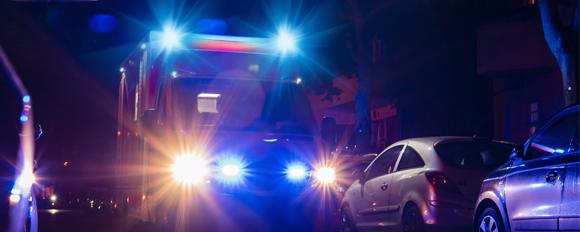What are the regulations for beacons?
In France, the use of flashing lights is regulated and subject to several approvals. Discover the regulations concerning their use as well as the different approvals in force
Beacons: What are the regulations ?
The regulation for slow moving professional vehicles
Articles R313-28 of the Highway Code and the decree of 06.02.1992 require slow moving vehicles to be equipped with orange beacons - special rotating or orange flashing lights. The vehicles concerned by the regulation are:
- Intervention, work, and service vehicles, at a standstill or in slow progression on a roadway open to public traffic or on the emergency lane.
- Vehicles ensuring the signaling of construction sites or temporary dangers.
How many orange beacons for a slow moving vehicle?
The number of orange flashing lights is regulated by the decree of July 4, 1972.
- if the vehicle is visible within a radius of 50 meters: one or two lights must be placed on the vehicle;
- if the vehicle is not visible because of a sign or an obstacle, it is mandatory to affix :
- a beacon on the front of the vehicle
- one beacon or two flashing lights at the rear of the vehicle
- a maximum of four rotating or flashing lights
Regulations for priority vehicles
Regulations for priority vehicles
Articles R313-28 of the Highway Code classify priority vehicles into two categories for the use of beacons.
- Priority vehicles of general interest (category A): these vehicles must be equipped with blue rotating lights. They are vehicles of the police, gendarmerie, customs, firefighting and intervention of mobile hospital units (SAMU or SMUR).
- General interest vehicles with passage facilities (category B): these vehicles must be equipped with blue flashing lights. They include ambulances for medical transport, intervention vehicles of Electricité de France and Gaz de France, SNCF surveillance service, cash transport of the Bank of France, medical associations involved in the permanence of care or snow removal vehicles.
How many blue beacons for a priority vehicle?
For category A vehicles, the lighting devices must consist of two blue flashing lights - individual fixed or removable rotating lights - or a special signaling ramp in which lights emitting blue light are grouped. These two devices must be visible to an observer 50 meters away.
- If the device is not visible at 50 meters and 360 degrees: you must equip the vehicle with one or two additional individual lights (or a signal ramp).
- If the vehicle is a firefighting vehicle, you must supplement the device with two penetration lights (two blue directional lights) mounted at a maximum height of 1.6 meters from the ground and facing the front of the vehicle.
What are the approvals for beacons ?
To be in order, your vehicles must be equipped with approved flashing lights: for orange and blue flashing lights, they must comply with the European directive ECE-R65 and the TFSL directive to be used on the road network. These directives specify:
- Luminous values;
- The light distribution;
- Requirements to be met.
All beacons (in various colors, including orange and blue) used on the road network must also comply with the ECE-R10 approval for electromagnetic compatibility. This limits the electromagnetic emissions and guarantees a sufficiently high resistance not to disturb the other surrounding devices.
Vehicles authorized to operate on airports must comply with ICAO (International Civil Aviation Organization) regulations which specify the light frequency values to be used.
All Vignal Group beacons are ECE-R65 and ECE-R10 approved. We also offer some models that meet ICAO regulations.



